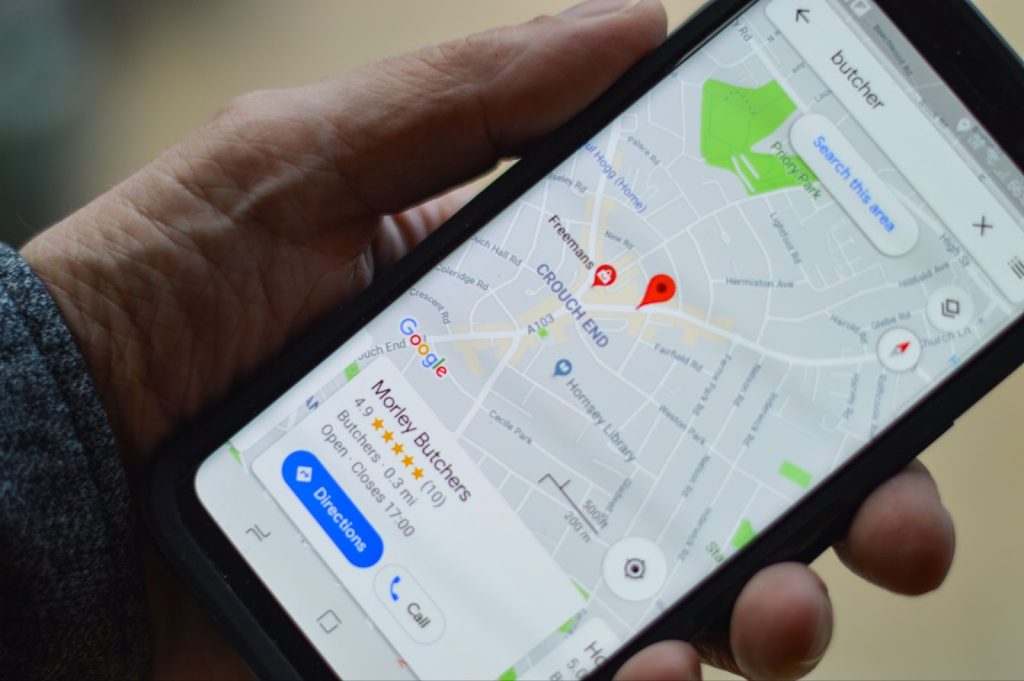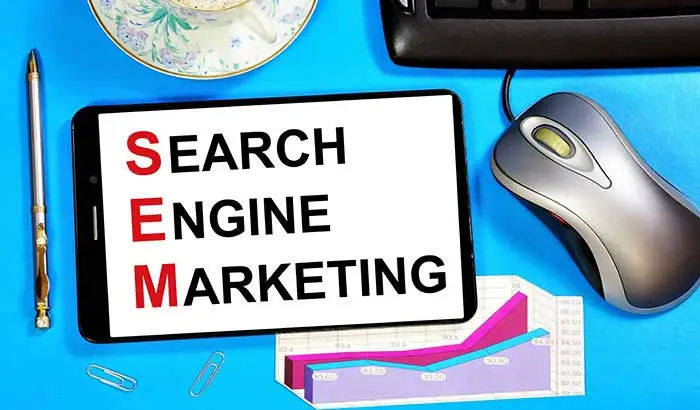If you want your business to succeed in today’s world, understanding the benefits of search engine marketing (SEM) is a must. By leveraging SEM and its many benefits, you can increase your online visibility and attract more customers to your website, which can help your business grow.
You know how Google works; it takes a lot of work for your site to rank, and sometimes it feels impossible for your business to get the visibility it deserves. There are hundreds if not thousands of other businesses like yours vying for potential customers’ attention, so you have to innovate to make sure you’re seen.
Can SEM Help My Business Grow?
If you’re a business owner, you may have tried (or at least considered) utilizing search engine marketing to solve this problem and drive more traffic to your website.
SEM is a form of digital marketing that involves creating targeted ads that appear when people type certain words or phrases in a search engine. You know when you Google something, and there are a few sites at the top that say “sponsored”? That’s search engine marketing.
It’s an incredibly powerful marketing tool with a ton of benefits. If you’re still on the fence about whether or not you should use it or if it’s right for your business, we’ve covered seven of the biggest benefits of search engine marketing. By the time you’re done reading, you’ll be a search engine marketing specialist.
Whether you’re a small business looking to expand your local reach or a large company seeking to stay ahead of the competition, search engine marketing can help you achieve your marketing goals and grow your business. Let’s take a look at how it could benefit you and your business.
1 – Increased Visibility and Traffic
One of the biggest and most obvious benefits of search engine marketing is its ability to increase traffic to your website. By bidding on relevant keywords, you can ensure that your ads appear at the top of search engine results pages (SERPs), which can lead to higher click-through rates and more website traffic.
This increased visibility can be especially important for businesses just starting out or operating in highly competitive markets; if people don’t see your site, they probably won’t know it exists.
However, simply bidding on keywords and getting your ads to the top of SERPs is not enough to guarantee success. Your ads must also be optimized to attract the right audience and get clicks. This requires creating strong ad copy that is both compelling and relevant to the user’s search query. In addition, your ads should communicate the benefits of your products or services and give the user a reason to visit your site.
In addition to creating compelling ad copy, it’s also important to use relevant keywords that will resonate with your target audience. This requires conducting thorough keyword research to understand what terms users are searching for and how you can best position your ads to be seen by those users.
You can also use negative keywords to exclude irrelevant searches to your business, which can help you save money and improve the overall effectiveness of your campaigns.
Another key aspect of increasing traffic through SEM is targeting specific geographic regions (we’ll discuss this more in-depth below). For example, if you operate a local business, you may want to target users searching for products or services in your area.
This can be done through location targeting, which allows you to specify the areas where your ads should be shown. By targeting users in your local area, you can increase the likelihood of driving high-quality traffic to your website.
As you work to create the perfect ads, it’s important to remember that SEM is an ongoing process. Therefore, you’ll need to continuously monitor and optimize your campaigns to ensure they reach the right audience and drive the most traffic to your website.
By staying up-to-date with the latest trends and best practices in SEM, you can continue to improve the performance of your campaigns and drive even more traffic to your website over time.
2 – Targeted Audiences
Another one of the key benefits of search engine marketing is the ability to create highly targeted ads that reach specific audiences. By targeting your ads to the right audience, you can improve the effectiveness of your campaigns and increase the likelihood of converting users into customers.
To create targeted ads, it’s important first to identify your target audience. This requires understanding the demographics, interests, and behaviors of your ideal customers. Then, you can use tools like Google Analytics and social media insights to gather this information and create user personas that represent your target audience.
Once you have identified your target audience, you can create ads that speak directly to their needs and interests. Your ad copy should be compelling and relevant to the user’s search query, and your ads should clearly communicate the benefits of your products or services and give the user a reason to click on the ad.
In addition to creating compelling ad copy, you can use ad targeting options to reach specific audiences. For example, you can target users based on their location, age, gender, interests, and even their search devices. This allows you to create ads that are highly relevant to the user’s needs and interests, which can lead to higher click-through rates and, ultimately, more conversions.
Another important aspect of targeting your ads is using the right keywords. This requires conducting thorough keyword research to understand what terms users are searching for and how you can best position your ads to be seen by those users. As we mentioned above, negative keywords can be used to exclude searches that are not relevant to your business, which can help you save money and improve the overall effectiveness of your campaigns.
By targeting your ads to the right audience and using the right keywords, you can improve the overall effectiveness of your SEM campaigns and increase the likelihood of converting users into customers. However, it’s important to remember that, like everything with SEM, targeting is an ongoing process.
You’ll need to monitor and optimize your campaigns to make sure that they reach the right audience. Look for ways to improve the performance of your campaigns and drive even more targeted traffic to your website over time.
Let’s put it in simple terms; If you put a billboard up by the freeway, it would probably get a lot of eyes on it, but how many of those people are a part of your target audience? Unfortunately, it’s almost impossible to know. But with SEM, you can ensure that the right people see your ad by targeting specific keywords and geographic regions.
3 – Cost-Effective Advertising
This is huge, especially for businesses that have a limited marketing budget. SEM is highly cost-effective and can help businesses keep better track of their ad spending.
For one, you have the ability to set a budget for your campaigns and only pay when a user clicks on your ad. This means you’re not wasting money on ads that don’t generate results. Additionally, you can set bids for specific keywords, allowing you to control your costs and ensure you’re only paying what you’re comfortable with.
Another advantage of SEM is that it’s highly measurable, which will help you keep track of costs. With tools like Google Analytics, you can track the performance of your campaigns in real-time and make adjustments as needed to improve their effectiveness. You can also see exactly how much you’re spending on each click and calculate your return on investment (ROI) for each campaign.
Compared to traditional advertising methods, SEM is often more affordable and cost-effective. For example, the cost per thousand impressions (CPM) for a Facebook ad could be as high as $7, while the cost per click (CPC) for a Google Ads campaign could be as low as $0.10. This means you can reach a larger audience with SEM for less money.
Additionally, because of how SEM targeting works, you’ll be able to ensure that the money you’re spending is going to where it’ll be most effective. You’ll be able to reach the right audience at the right time. You can also create ads that are highly relevant to the user’s search query, which can lead to higher click-through rates and more conversions.
Overall, the cost-effectiveness of SEM makes it an attractive option for businesses of all sizes. By setting a budget and targeting the right audience with relevant ads, you can drive traffic to your website and increase conversions without breaking the bank. Additionally, the ability to track and measure the performance of your campaigns allows you to continuously optimize your strategy and improve your ROI over time.
4 – Measurable Results
One of the biggest benefits of an SEM campaign is its ability to help you track and measure its results over a period of time. SEM campaigns can take time to gain traction and show results, so monitoring their performance during their run is essential.
By tracking your metrics over weeks and months, you can identify trends and patterns that can help you refine your campaigns and optimize your targeting and ad copy for even better results.
One way to do this is to use search engine marketing tools like Google Analytics to track key metrics like click-through rates, conversion rates, and bounce rates over time.
You can also use these tools to track user behavior on your website, such as which pages they visit and how long they spend on each page. By analyzing this data over time, you can gain a deeper understanding of how your SEM campaigns are impacting user behavior and adjust your campaigns accordingly.
A/B testing is a powerful tool that allows you to test different variations of your ads to see which performs best. Testing elements like ad copy, headlines, and images will help you identify which ad variations drive the most clicks and conversions, allowing you to change your campaigns as needed.
To conduct an A/B test, you would create two variations of your ad, such as one with a different headline or image, and then run both ad versions simultaneously. Then, by comparing the performance of both ads, you can identify which ad variation is performing better.
While SEM campaigns primarily focus on driving online conversions, tracking offline conversions is also important. By using tools like call tracking and in-store tracking, you can gain insights into how your SEM campaigns are driving offline conversions, such as phone calls or in-store purchases.
For example, you might use call tracking to see how many phone calls your ads generate and which drives the most calls. You can then use this data to adjust your campaigns to drive more phone calls and other offline conversions.
Attribution modeling is a way to track the various touchpoints that a customer encounters on their path to conversion. By using attribution models, you can better understand how your SEM campaigns influence customer behavior and optimize your campaigns to drive more conversions along the customer journey.
For example, you might use a first-click attribution model to give credit to the first touchpoint a customer encounters on their journey or a last-click attribution model to give credit to the last touchpoint before conversion. When you use attribution modeling, you can understand how your SEM campaigns are driving conversions.
5 – Competitive Advantage
All the benefits listed above combine to give you a huge advantage over your competitors. Firstly, a strong SEM campaign means that you’re reaching potential customers who are actively seeking products or services like yours.
Furthermore, SEM provides a level playing field for businesses of all sizes. Even if you are a small business, you can still compete with companies with bigger marketing budgets. By choosing the right keywords and optimizing your ads, you can achieve high visibility and attract customers to your website, regardless of your budget.
If you’re committed to creating the best campaign possible, you can test and optimize your ads, helping you maintain an edge over your competitors.
6 – Brand Awareness and Credibility
Another significant benefit of search engine marketing is its ability to increase brand awareness and credibility. By appearing at the top of search engine results pages for relevant keywords, your business can gain more exposure and recognition among potential customers.
When people search for products or services related to your business and see your ads at the top of the SERPs, it creates an immediate impression that your brand is credible and established. This can help build trust with potential customers and make them more likely to engage with your business.
In addition, SEM provides a level of control over your online presence that other marketing channels may not offer. With SEM, you can create ad copy tailored to your brand and messaging, ensuring you present a consistent and recognizable brand image across all your advertising channels.
By consistently appearing at the top of SERPs, your business will be viewed as a leader in your industry. This can go a long way in establishing credibility and trust with potential customers, who are more likely to choose a brand they recognize and trust over an unknown entity.
Moreover, SEM offers a cost-effective way to build brand awareness and credibility, particularly for smaller businesses that may not have large marketing budgets. With SEM, you only pay for the clicks you receive on your ads, making it a much more cost-effective option than traditional advertising channels such as print or TV.
Furthermore, by using SEM, you can target your ads to specific locations and demographics, ensuring that your ads are being seen by the people most likely to be interested in your products or services. This targeted approach can help you reach potential customers who are actively searching for what you offer, leading to more high-quality leads and increased brand recognition.
SEM is a powerful tool in helping your business increase brand awareness and credibility. By appearing at the top of SERPs and presenting a consistent and recognizable brand image, you can establish trust with potential customers and set yourself apart from competitors. With its cost-effective and targeted approach, SEM is a valuable addition to any marketing strategy for businesses looking to build brand recognition and credibility.

7 – Local SEO
Search engine marketing is an effective way to increase your business’s visibility online, especially when it comes to local search engine optimization. You may think that SEM isn’t for local businesses, but it can be an instrumental tool in helping people know about your local business.
Local SEO is a crucial element of any business with a physical location, as it helps your business show up in search results when potential customers are searching for businesses like yours in their local area.
SEM can help boost your local SEO efforts by targeting specific geographic regions with ads. By doing this, you can ensure that your ads are only shown to potential customers in your area, increasing the likelihood that they will visit your business.
In addition to geographic targeting, SEM can also help with local SEO by using relevant keywords. By including location-specific keywords in your ad copy, you can increase your chances of appearing in local search results.
For example, if you own a pizza restaurant in New York City, keywords such as “NYC pizza” or “pizza delivery in Manhattan” can help ensure that your ads appear in search results when people search for those specific terms.
Another way SEM can help with local SEO is through the use of a Google Business profile. This tool allows businesses to manage their online presence across Google, including in search results and Google Maps. By claiming and optimizing your listing, you can increase your chances of appearing in local search results and drive more traffic to your business.
8 – Mobile Optimization
Mobile optimization is an essential aspect of search engine marketing. With the majority of online searches being conducted on mobile devices, it’s crucial that businesses optimize their SEM strategies for mobile. By doing so, they can ensure their website is easily accessible and navigable for mobile users, resulting in more traffic and increased conversions.
Mobile optimization involves a variety of techniques that make websites more mobile-friendly. This includes having a responsive design that adjusts to fit the size of the user’s screen, optimizing loading times, and simplifying navigation to make it easier for users to find what they’re looking for.
One of the key ways that SEM can help with mobile optimization is by ensuring that your ads are optimized for mobile devices. This means using ad formats designed specifically for mobile, such as responsive ads that adjust to fit the size of the user’s screen. By using mobile-specific ad formats, you can ensure that your ads are displayed correctly on mobile devices and that they’re more likely to be clicked on by mobile users.
Another way that SEM can help with mobile optimization is by using location-based targeting. With location-based targeting, you can target users in a specific geographic area, such as a city or a zip code. This is particularly useful for businesses that rely on local customers, as it ensures that your ads are shown to users who are most likely to be interested in your products or services.
In addition to location-based targeting, SEM also offers mobile-specific bidding strategies. These strategies allow you to adjust your bids based on the device that the user is using to conduct their search. For example, you may choose to bid more for mobile users, as they could have a higher conversion rate than desktop users depending on the product or service.
Preparing to run an SEM campaign also provides the perfect opportunity to make sure your websites are optimized. Of course, this is important for desktop users as well. Still, it’s extremely important for mobile users because of the number of people who browse the internet on their mobile devices. A lot of business owners spend so much time perfecting their desktop site that they forget to make sure that their mobile site is optimized.
When it comes to mobile optimization, there are a few key factors to consider. First, ensure your website is responsive and adjusts to fit any device’s screen size. This will ensure that your website is easy to read and navigate on mobile devices and that users won’t have to zoom in or scroll around to find what they’re looking for.
Another important factor to consider is page load speed. Mobile users are often on-the-go and may have limited data plans, so it’s important to make sure that your website loads quickly on mobile devices. This can be achieved through a variety of methods, such as compressing images, reducing the number of HTTP requests, and minimizing the use of large files and scripts.
Overall, mobile optimization is a critical component of any SEM strategy. Optimizing your ads and website for mobile devices allows you to reach more users and increase the chances of converting them into customers. With the majority of online searches now being conducted on mobile devices, businesses that fail to optimize for mobile risk falling behind the competition.
Are There More Benefits of SEM?
Yes! While we mentioned lots of the benefits SEM can provide you and your business, there are just too many to mention in one article. We suggest sitting down with a search engine marketing specialist and discussing how SEM could be useful to your specific business and how to utilize all the search engine marketing tools.
They can help you understand how to use specific search engine marketing tools and assist you in carrying out your plan.
How Do I Start Implementing SEM?
Now that you’re on board with SEM, it’s time to implement it into your marketing strategy. Sit down with a search engine marketing specialist to discuss these steps:
-Define your goals: Before you start, you need a clear idea of what you want to achieve with your SEM campaign. For example, do you want to drive more traffic to your website? Increase brand awareness? Generate leads? Once you know your goals, you can start developing your campaign strategy.
-Conduct keyword research: One of the most important aspects of SEM is identifying the right keywords to target. You need to know what your potential customers are searching for online so you can bid on those keywords and get your ads in front of them. Use keyword research tools to help you identify the most relevant and effective keywords for your business.
-Set your budget: SEM can be cost-effective but still requires a budget. Determine how much you can afford to spend on your campaign and allocate your budget accordingly. You’ll also need to decide which bidding strategy you want to use, such as cost per click (CPC) or cost per thousand impressions (CPM).
-Create your ads: Your ad copy will entice people to click on your ads, so it’s important to make them compelling and relevant. Include your target keywords in your ads and make sure they are visually appealing and easy to read.
-Monitor and optimize: SEM is an ongoing process that requires monitoring and optimization. Keep an eye on your campaign performance and make adjustments as needed to improve your results. This includes adjusting your bidding strategy, refining your ad copy, and targeting specific geographic regions or demographics.
Remember, implementing SEM takes time and effort, but it can pay off in big ways for your business. By following these steps and continuously refining your campaign, you can improve your online visibility and drive more traffic to your website.
Stand Out Online with Revity
After reading through the benefits of search engine marketing and how to implement SEM in your own business, you might be feeling a bit overwhelmed. The good news is that you don’t have to do it alone. At Revity, we have years of experience helping businesses of all sizes implement effective SEM strategies.
Our team of experts will work with you to develop a tailored plan that aligns with your business goals and budget. We’ll start by conducting keyword research to identify the most relevant and valuable terms for your business. From there, we’ll create compelling ad copy that resonates with your target audience and drives clicks to your website.
But we don’t stop there. We’ll continuously monitor and optimize your campaigns to ensure you get the best possible results. This includes adjusting bids, testing ad variations, and refining targeting based on performance data. Our goal is to help you get the highest return on investment possible from your SEM campaign.
Not only that, but Revity can also help with your other digital marketing needs, such as social media advertising, email marketing, and search engine optimization (SEO). We take a comprehensive approach to digital marketing, meaning you won’t have to worry about marketing; you can focus on running your business.
So if you’re ready to take your business to the next level with SEM and other digital marketing strategies, contact Revity today on our website or at 801-877-3362. Our team of experts is ready to guide you through the process and help you achieve success online. Take advantage of the opportunity to drive more traffic, generate more leads, and grow your business. Contact us now to get started.







